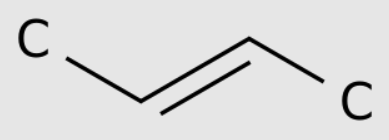Cis-2-butene is a natural product, which can be found in grdelia hirsutula, grdelia stricta and other organisms with data.
The cis-2-butene and trans-2-butene were identified by GC - FID and GC - MS.
Tenax gas chromatography or cartridge method is used as adsorbent, and liquid nitrogen is used as coolant. Low temperature sampling method is used to capture olefins in ambient air, including cis-2-butene, and analyze them in a 2-column system equipped with two flame ionization detectors.
The olefins (including cis-2-butene) in phreatic gas were identified and detected by mass spectrometry and gas chromatography. The sources of pollutants are paint, coating, sealant and compressed breathing gas supply.
An external vacuum air collector using Teflon and Tedra bags is used to sample non methane hydrocarbons in the air, including cis-2-butene. The air sample is introduced into the gas chromatograph by using the low temperature capture technology, and the air sample is analyzed by gas chromatography. Non methane hydrocarbons were detected in the atmosphere around New York City.
Chemiluminescence instrument reacts with all hydrocarbons containing olefin double bonds, including cis-2-butene, and compounds containing sulfide or amino group. The output of this monitor is compared with the measurement results of traditional non methane hydrocarbon monitor for 40 days, and the results are similar in nature. The possibility of using the monitor in air quality measurement is discussed.
Cis-2-butene is a colorless gas. It is used in solvents, as a crosslinking agent, in gasoline polymerization, in butadiene synthesis, and in the synthesis of C4 and C5 derivatives. Human studies: Cis-2-butene is a simple asphyxiant. The rapid evaporation of liquid 2-butene (cis or trans, or a mixture of both) may cause frostbite. This substance may have an effect on the central nervous system. Exposure to air may cause unconsciousness.
The production of cis-2-butene and its use as solvent, crosslinking agent, gasoline polymerization, butadiene synthesis and C4 and C5 derivatives synthesis may lead to its release into the environment through various waste streams. If released into the air, the vapor pressure gauge of 1600 mm Hg at 25 ° C indicates that cis-2-butene will only exist in the atmosphere as a gas. The gas phase cis-2-butene reacts and degrades with photochemical hydroxyl radicals, ozone molecules and nitrate radicals in the atmosphere; The half-life of the reaction with hydroxyl radical in air is estimated to be 7 hours; The half-life of the reaction with ozone molecules is estimated to be 2 hours; The half-life of the reaction with nitrate free radicals at night is estimated to be 0.5 hours. Cis-2-butene does not contain chromophores absorbed at the wavelength of>~290 nm, so it is not easy to be photolyzed directly by sunlight. If released into the soil, the estimated Koc is 100, and cis-2-butene is expected to have a high mobility.
According to Henry's law constant of 0.231 atm cu/mol, volatilization prediction of wet soil surface is an important fate process. Cis-2-butene can volatilize from the surface of dry soil according to its vapor pressure. No biodegradation data in soil or water. However, based on the study of pure culture leading to the oxidation of maleic butene and the accumulation of metabolites, preliminary biodegradation may be an important environmental fate process in soil and water under certain conditions. If released into water, cis-2-butene is not expected to adsorb onto suspended solids and sediments according to estimated Koc. According to Henry's law constant of the compound, volatilization from water surface is an important fate process. The volatilization half-life of the model river and the model lake is estimated to be 2 hours and 3 days, respectively. BCF is estimated to be 16, indicating that the biological concentration potential of aquatic organisms is very low. Since the compound lacks functional groups that hydrolyze under environmental conditions (pH 5 to 9), hydrolysis is not expected to be an important environmental change process. In workplaces where cis-2-butene is produced or used, occupational exposure to cis-2-butene may occur through inhalation and skin contact with the compound. The general population may be exposed to cis-2-butene through inhalation of ambient air, especially air near fuel emission sources, inhalation of tobacco smoke, and skin contact with consumer products containing cis-2-butene, especially during the use of gasoline products.



